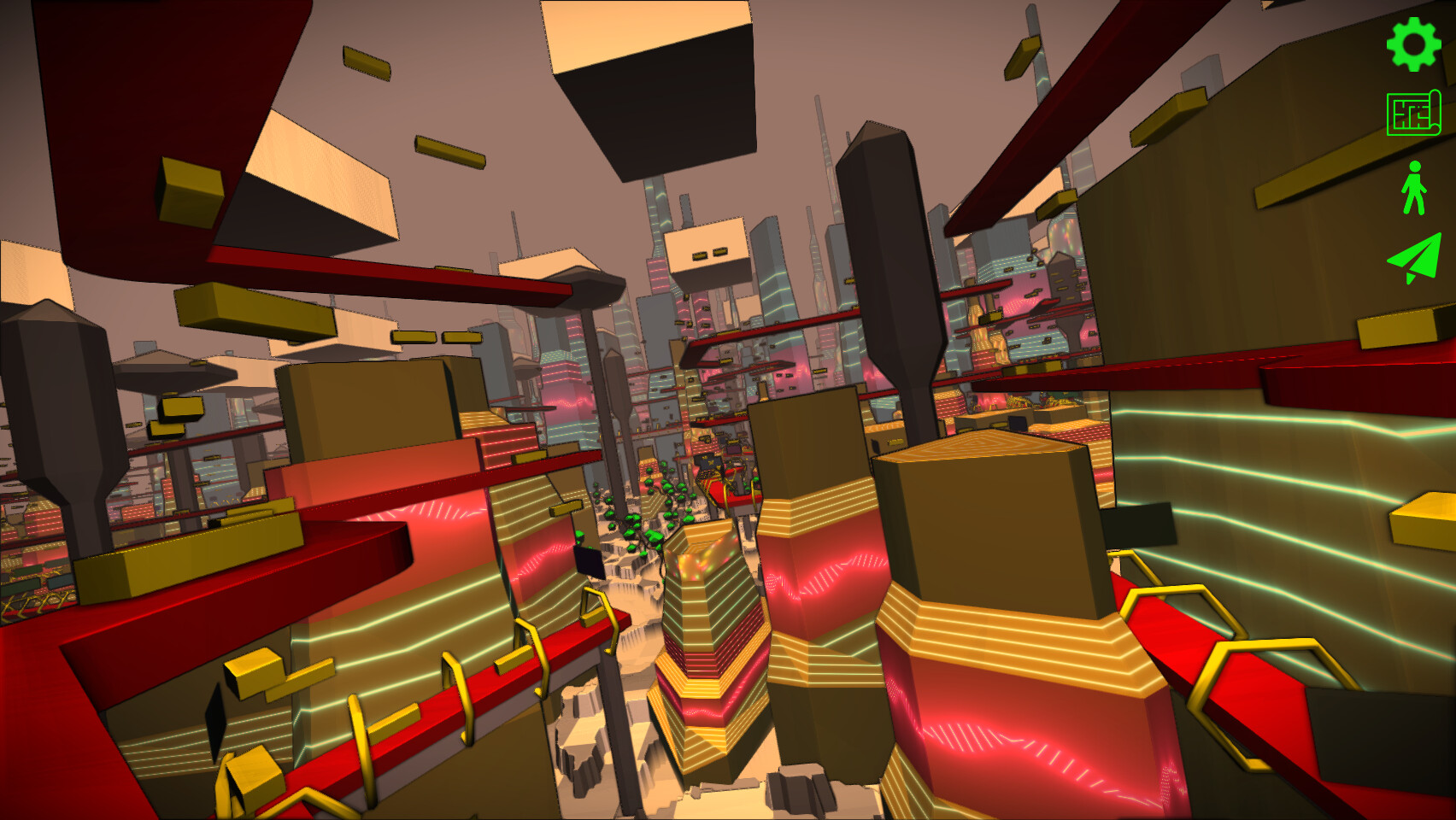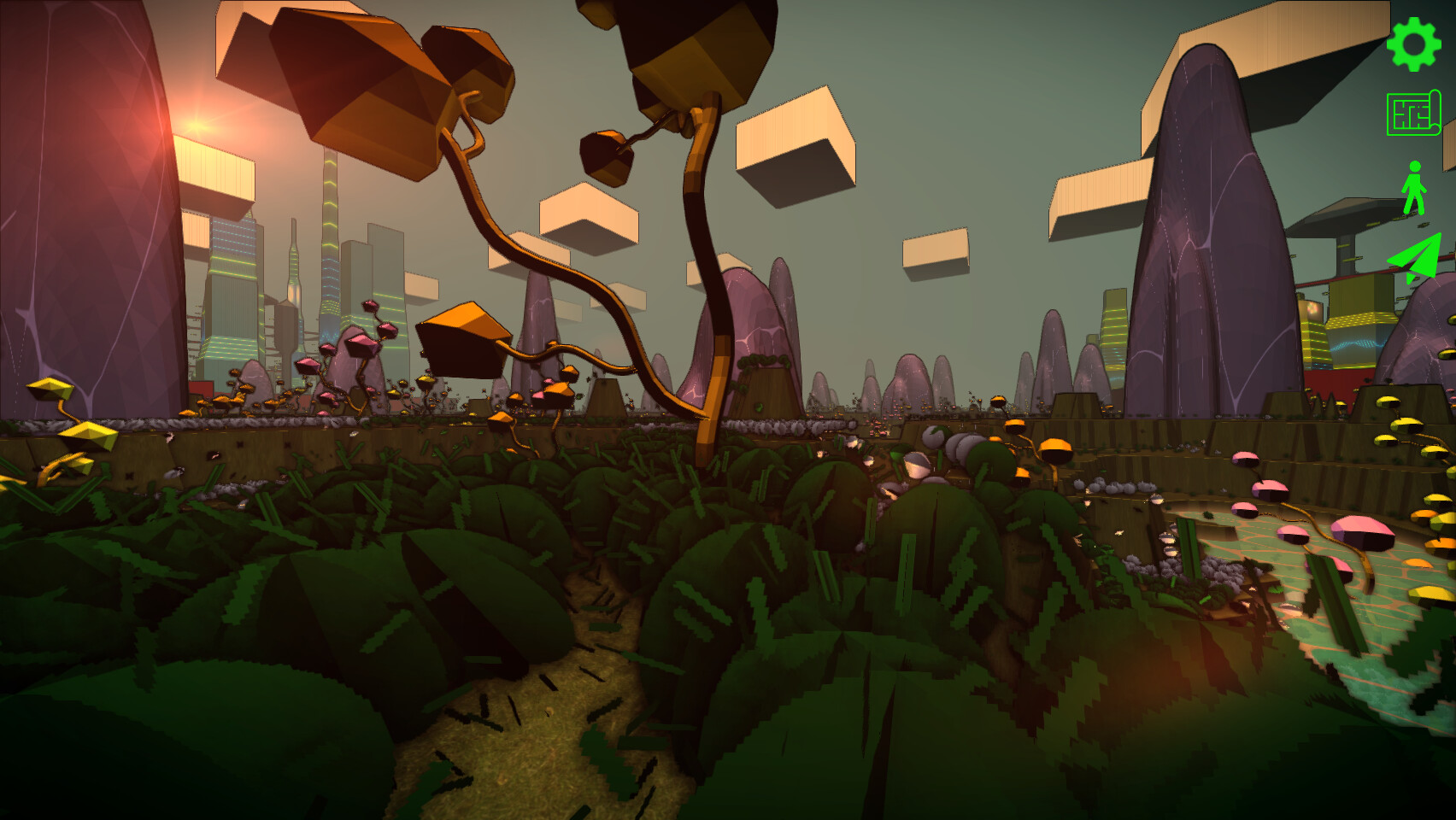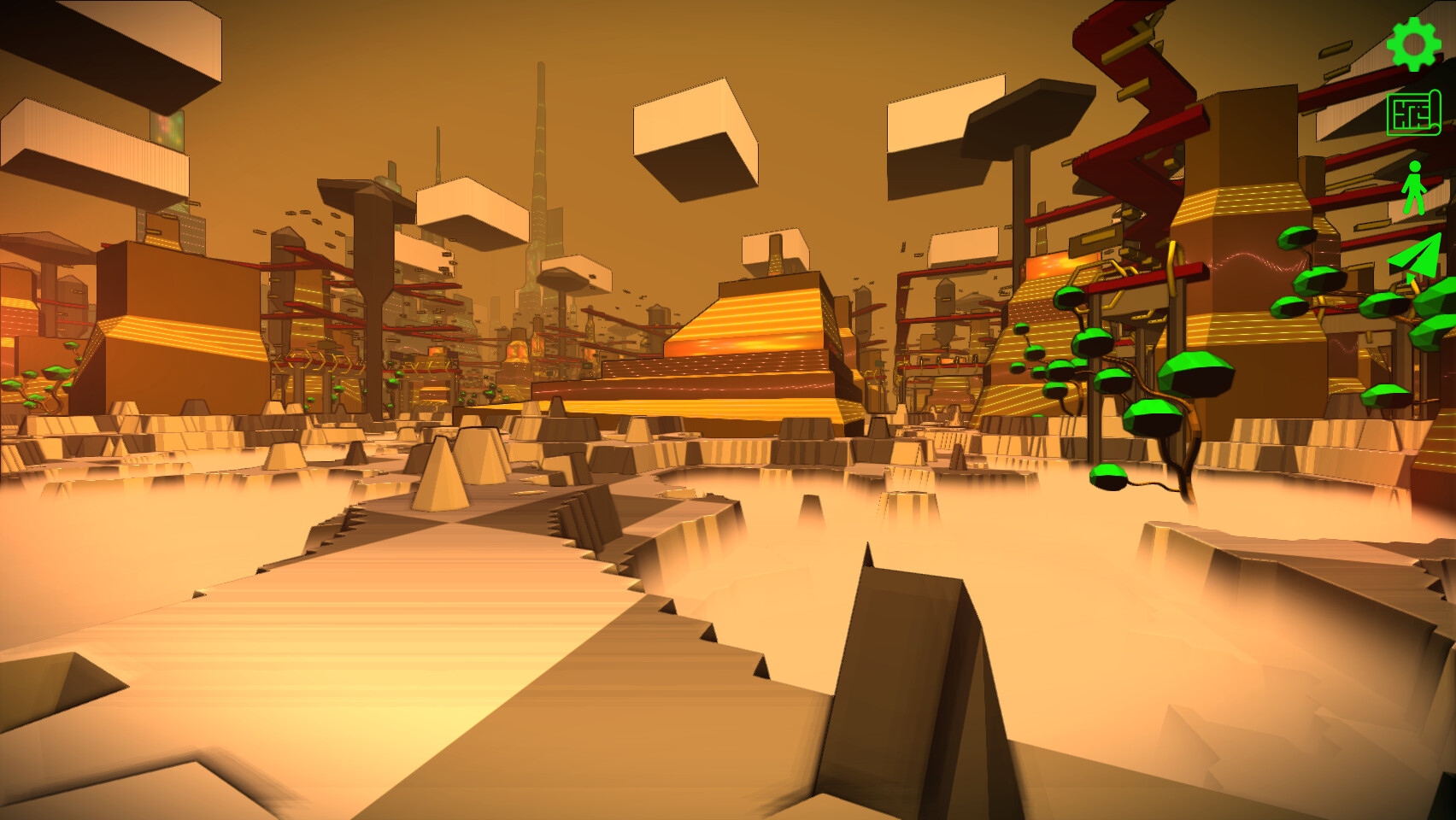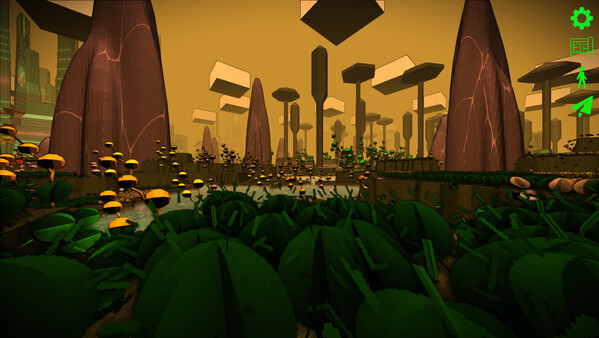- Use the in-game editor to define the rules for creating your terrain, grass, rocks, trees, city and traffic
- Create your own unique look using the wide range of graphical settings from retro-pixelated to film-noir and more
- Walk and fly around your creation
- More features (and gameplay) coming soon...
I've been trying to generate gameplay (that's ideally fun) procedurally.
An initial idea was to set up an NP hard problem or two around the player (i.e. the knapsack problem and the travelling salesman problem) albeit within the context of the game's theme and then leave them to solve it in any one of many ways. On completion then I was thinking about simply ranking their solution according to some metrics (fuel expended, time taken, enemies destroyed, game people saved etc) on a leader board, but then I got distracted...
Whilst setting up the systems for the above I started experimenting with a couple of simple ideas. Let's call them "Gameplay Layers" and "Gameplay Cycles":
- Gameplay Layer: A Gameplay layer is an approximately 200 lines of code that adds to the game some system or mechanic i.e. time of day, weather, defensive tower, refuelling rings, enemy waves etc
- Gameplay Cycle: This is simply a timer that activates periodically (configurable), lasts for a configurable amount of time and then pauses for a configurable amount of time until the cycle then repeats.
A Gameplay Layer is activated and deactivated according to a Gameplay Cycle.
With these two simple ideas I seem to be able to generate interesting events as the gameplay layers run out of phase with each other the resulting behaviour of which I haven't had to code explicitly.
For example, the time of day system is running out of phase with respect to the weather system so you can have a quiet foggy morning, or a lightning storm during the day or fog at night whilst being overrun by a wave of enemies or a clear night etc.
Fun for free?
Here's a short video:
I recently ramped up the level of procedural tree foliage and wanted to briefly post about it.
I chose to generate the trees myself and spent some time thinking about how to do that. I didn't look at any other implementations but rather tried to imagine the simplest approach I could think of and build out from there.
Initially I considered a tree to simply be a pole (like a telegraph pole).
Pointing up, normal to the surface I then imagine rings around its exterior that I could then stitch together using triangles.
Next I imagine at some distance along the pole, branching by rotating the (imaginary) pole about the branching point (the new origin) a configurable number of degrees in the XY ZY planes.
This process repeats recursively with the pole radius narrowing at each branching point and shortening and effectively produces a hierarchy of transformations (one per branching point) that I then bake into the mesh vertices for each branch sub-mesh.
Next, to improve on the rigid pole appearance I modified the ring placement to follow a sinusoidal pattern (rather than the straight pole) by imagining the sin function rotated counter-clockwise +ve 90 degrees in the XY plane. Starting at zero then this function (now transposed) moves vertically upwards and oscillates +/- about the X axis.
For the leaves I chose initially a spherical distribution of points.
For the spherical distribution of triangular leaves I went with the Fibonacci sphere making each point the leaf triangle's circumcentre.

I then added support for optional hanging vines the colour of which are complementary to the leaf colours.

Finally, for coloration I added support for 3 schemes; Monochrome, Complementary and Analogous coloration (in HSV colour space).
A short video of the results can be see in this video:
This is my first dev diary post. I'm hoping to do this on a semi-regular basis. Over the last few weeks I've been working on the targeting system.
This game is built using my own engine so it was a case of experimenting, failing and then finally settling on a simple and extensible design for weapons, associated explosions and a simple hand written collision detection system.
I wanted to be able to create a new weapon type in a few lines of code, a corresponding explosion animation and custom weapon and explosion sounds.
In addition I wanted to be able to register a collideable thing with the collision system.
The collision system in effect then sits in-between the weapon systems and collideable objects. It performs collision detection and manages the notification of collisions to interested observers.
A short video of it in action is here
If you want to know more about the design and / or have any suggestions for improvement let me know!
Thanks,
Ben.
Minimum Setup
- OS: Linux + SteamOS
- Processor: Requires a 64-bit processor and operating system
- Graphics: OpenGL 3.3
Recommended Setup
- OS: Linux + SteamOS
- Processor: Requires a 64-bit processor and operating system
- Graphics: OpenGL 3.3
[ 6446 ]
[ 4329 ]
[ 5362 ]













































